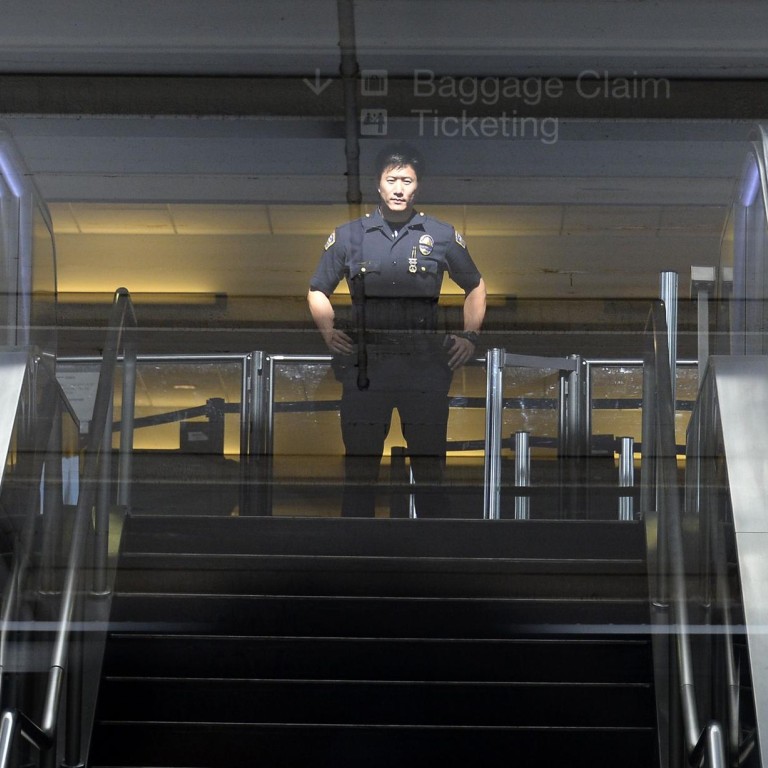
Deadly shooting in Los Angeles exposes airport security flaws
Experts say creating a fail-safe perimeter at Los Angeles facility would be hard to do, costly and might shift attacks elsewhere
Despite a US$1.6-billion investment in new security measures at Los Angeles International Airport since the September 11 2001 terror attacks, Friday's shooting by a gunman who made his way deep into a passenger terminal demonstrates that the airport remains vulnerable to attacks that appear costly and difficult to defend against.
Lobbies, ticketing counters, baggage claim areas and sidewalks of the nine terminals at Los Angeles International Airport, the nation's third-busiest, are easily accessible to attackers intent on bringing firearms or bombs into the airport's public areas.
Creating a fail-safe security perimeter for the terminal area, however, would be extremely costly and might shift attacks by those seeking to do harm to other public gathering places, said Brian Jenkins, an authority on terrorism and aviation security at Rand Corporation, the Santa Monica-based think tank.
"It would be very hard to do," Jenkins said. "There would be very little net security benefit. Terrorists could go somewhere else, like attack a shopping mall in Nairobi or a theatre in Aurora, Colorado, or Times Square. What do we really gain?"

In Friday morning's attack, a gunman identified by police as Paul Anthony Ciancia, 23, carried an assault-style rifle through the lobby of Terminal 3 and began shooting as he passed through a Transportation Security Administration checkpoint.

On Saturday, Patrick Gannon, chief of the Los Angeles Airport Police Department, said the incident would be thoroughly reviewed to assess the police response and determine whether security improvements were needed. He praised the heroism of the officers who stopped the gunman near a fast-food restaurant in the terminal.
Internal reviews of such major incidents can be "brutal", Gannon said, adding that he expects his department to make security adjustments as a result.
Some say the attack points to soft spots in airport security and the need for additional measures, including more uniformed and plainclothes police on hand.
Marshall McClain, a veteran airport policeman and president of the Los Angeles Airport Peace Officers Association, said that earlier this year, armed police officers were shifted from their fixed assignments at TSA checkpoints to patrolling inside and outside passenger terminals.
After the 9/11 attacks, David Stone, the federal security director for the Los Angeles Airport at the time, was concerned that terrorists could easily breach the checkpoints and reach passenger gates and parked aircraft.
McClain said patrolling officers were not at or near the TSA screening area when Friday's attack occurred.
But he added that it's not clear whether having a police officer at the site could have prevented the shooting.
"In general, the officers are a good idea," McClain said. "They could be a deterrent."
He noted that the gunman who attacked the El Al Israel Airlines ticket counter at the Tom Bradley International Terminal in 2002, waited until uniformed police officers had left the area.
Adding police officers to terminals and returning them to checkpoints might be beneficial, Jenkins said. But he agreed that it is hard to say whether they could have stopped Friday's attack.
"A suicidal guy with a big rifle can walk through the doors of a terminal, get shots off and hit people," Jenkins said.
Gannon defended his decision to pull armed officers away from the TSA checkpoints, saying police need to modify procedures to avoid predictability.
